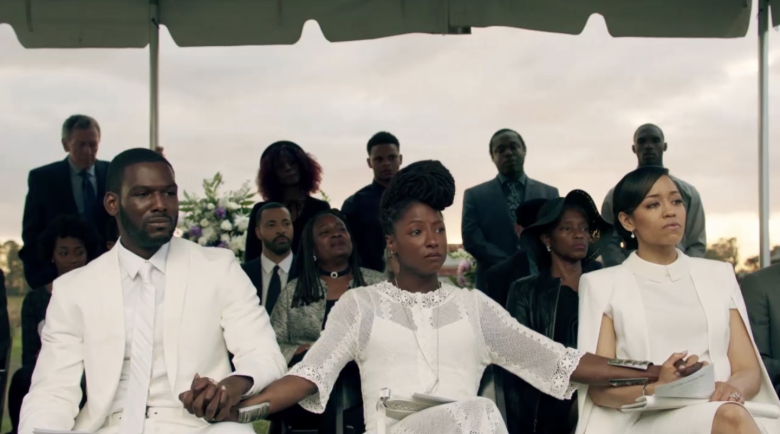Sawubona. Ngikhona.
This is a South African greeting from the Zulu tribe, which roughly translated means “I see you” (Sawubona), I am here (Ngikhona). A deeper meaning to this greeting however, is that Sawubona is a philosophy of honoring our shared humanity through bearing witness to each other’s existence and being generous with compassion. It invokes the need for us to be present with each other, because in saying I see you, what you mean is “How are you feeling? How do I live in a way that makes us both free? How do I help? How do I make room for you?” This is the philosophy that is the driving force in my life, and as I watched Queen Sugar on OWN, it felt as though it had also been inspired by this principle.
With the recent saturation of black life disposability and scarce solidarity, I think all of us have been longing for a break, seeking to catch a breath from the overdose of pain we’ve been experiencing. I know this is the case for me. I felt I wanted someone to just hold space for us to just breathe for a minute. Queen Sugar is that space for me. Watching the first episode felt like a longing from the collective black subconsciousness, a need we didn’t know we had, yet immediately recognized with each take.
Think of the opening sequence for example, where we see a macro shot of a black woman’s dreadlocks, as she is lying in bed carefree, beautiful, desirable. We see the camera glide over her face then move further away and revealing more of her, of her bedroom, of the man lying near her, until we see him helping her put her clothes back on in the most beautiful way I’ve ever witness. You might gloss over this scene and perhaps praise it for its aesthetic. But the little girl in me who used to dream of having long silky black hair like Snow White, the grown woman in me who doesn’t know if a man will like running his hand through her woolly hair, needed this. I didn’t know I needed this scene until I saw it. But Ava DuVernay knew we needed it. She knew the complicated relationship black women have with their hair, and she offered a peace of healing and empowerment. I felt seen in that scene. This show is a space of healing, of change, of transformation.
Queen Sugar is a crucible of black living, with the OWN team being its alchemist, and we the audience just have to relax and let ourselves be transformed by its magical power. Every scene on the show felt like a healing. A soft incantation in the wind, whispering “ I see you. I see you. I see you”. With every camera shot, I just kept nodding in agreement and kept holding my chest in shared pain. I even laid my grief and all my tears at the fiber optic altar during all the scenes leading to the death of the grandfather. Having just lost my grandmother a few months ago, the pain is still fresh and I couldn’t hold back. I gave all my tears and felt it all with the characters as if they had come to bear witness to my own pain by reenacting it on screen.
By the end of the first episode I was overcome with immense gratitude, for a show that presents black living in all its complexities. A show that touches on all aspects of our lives through poignant story lines and nuanced characters that don’t feel like caricatures. It is as if before crafting the book then developing the script, the writers asked “ “How are you feeling? How do I live in a way that makes us both free? How do I help? How do I make room for you?”
Queen Sugar saw me. Queen Sugar sees us, reflects us, heals us, transforms us.
Sawubona. Ngikhona.
I see you, I am here.
This piece originally appeared on Medium, and has been reprinted with permission.

